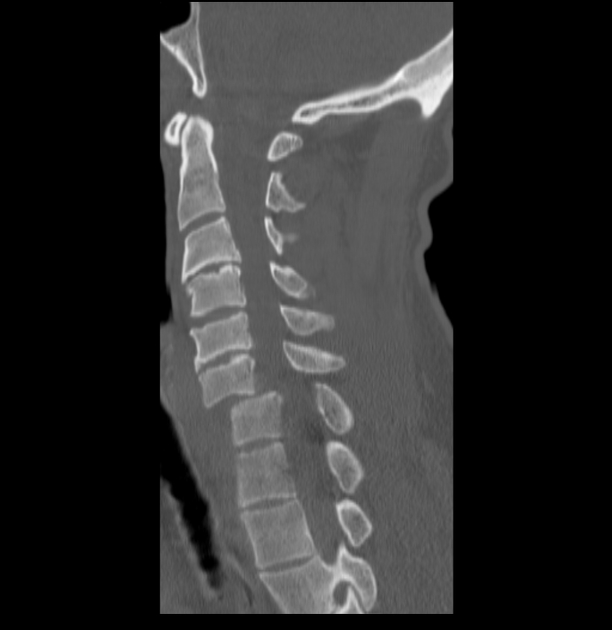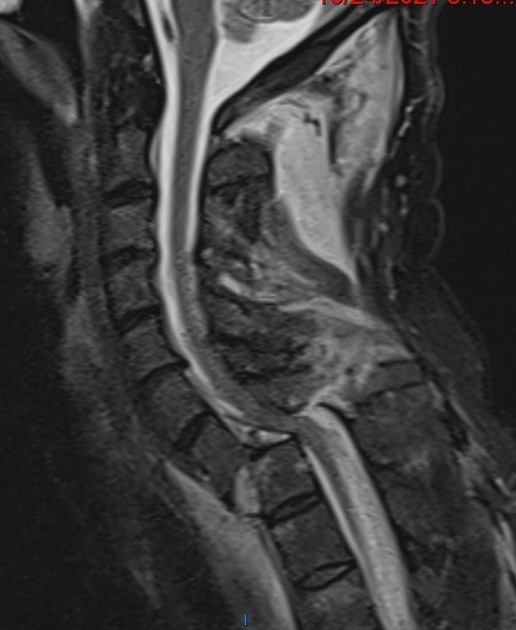A bilateral facet dislocation is an unstable flexion distraction type of dislocation of the cervical spine, often a result of buckling force. Occasionally, the bilateral facet dislocation has been named a 'doubly-locked' vertebral injury giving the impression of stability. However, due to complete ligamentous disruption, this is, in fact, an unstable injury 1.
Pathology
Mechanism
A bilateral facet dislocation was historically thought to result from hyperflexion, however, since the 2010s it is thought that a buckling force is more likely to be the primary cause 2.
Radiographic features
loss of apposition at facet joint: bilateral facet joints may be perched, locked or "jumped" 3
-
anterolisthesis can be more than 50%
if there is a lesser amount of displacement one of the facet joints may be intact (unilateral facet joint dislocation)
increased interspinous distance









 Unable to process the form. Check for errors and try again.
Unable to process the form. Check for errors and try again.